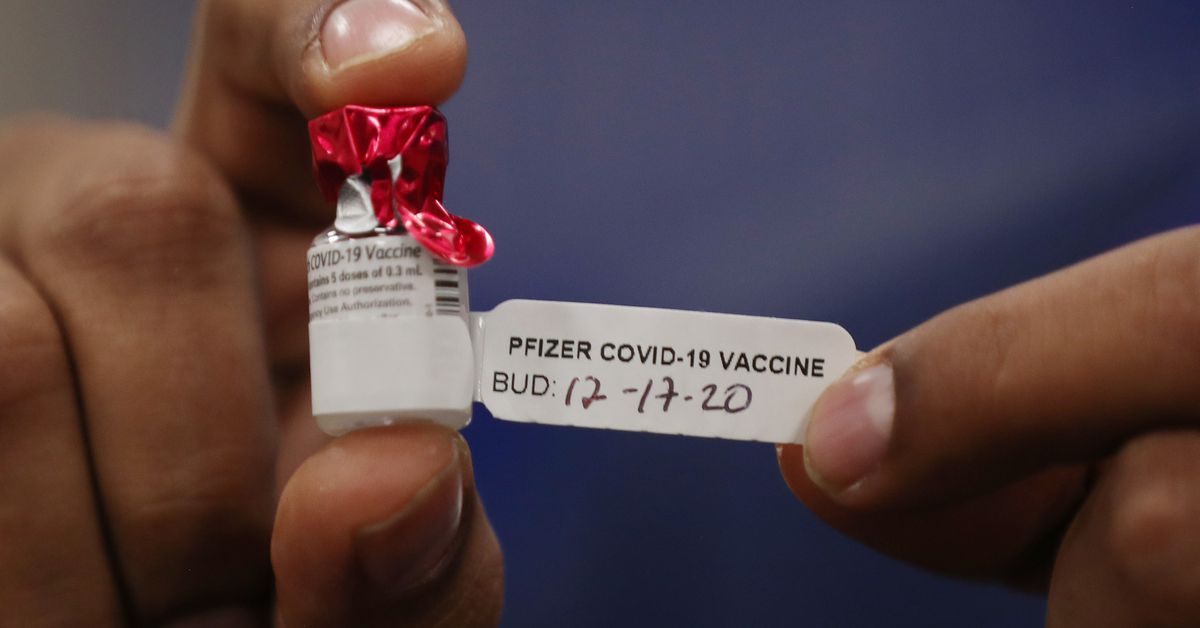COVID-19 vaccine monitoring program limited to English speakers
Source: The Verge added 17th Dec 2020A text message program designed to track side effects in COVID-19 vaccine recipients is currently only available in English, which could limit the data it is able to collect.
The program, called v-safe, is one way the Centers for Disease Control and Prevention will follow up with people who take the vaccine. It was rolled out with the first wave of vaccinations last week.
“When you’re talking about technology, literacy and language are usually second tier,” says Jorge Rodriguez, a health technology equity researcher at Brigham and Women’s Hospital in Boston. “Version one is English-speaking, and the Spanish version will come later, the Mandarin version will come later.”
The CDC plans to roll out a Spanish version of v-safe “fairly shortly,” Tom Shimabukuro, a member of the Vaccine Safety Team on the COVID-19 Vaccine Task Force, told The Verge. The agency also plans to offer v-safe in simplified Chinese, Korean, and Vietnamese, but Shimabukuro did not have a timeline for when that might be available. “They’re all in the process of undergoing a translation from English to these other languages,” he says.
The agency’s information toolkit around the COVID-19 vaccines, which includes fact sheets for the health care workers who are part of the first wave of vaccinations, is also still only available in English. Translations of the kit into other languages are in progress — Spanish first, and then other languages, the CDC says. The lag is a concern for the approximately 25 million people in the United States who speak limited English. Information about vaccines must be available for people with low literacy and broadly translated, said David Curry, executive director of the New York University and Children’s Hospital of Philadelphia-affiliated Center for Vaccine Ethics and Policy.
“We energetically urge and are confident that CDC will extend a special effort to enhance these materials,” he said in a public comment made during the CDC’s Advisory Committee on Immunization Practices meeting, held on December 12th.
Until those translations are complete, the agency’s vaccination information and the v-safe program may not be easily accessible for non-English speakers. Even after translation, people who speak languages other than those that v-safe plans to include may not be able to participate.
The portion of vaccine recipients not covered by these languages might not be enormous, but it overlaps with groups that tend to already be underserved by the health care system. Non-English speakers tend to have worse health outcomes overall, and they’ve had worse outcomes from COVID-19 as well. “Given the disparities that we’ve seen in terms of outcomes in the pandemic, for this specific vaccination campaign, it’s even more critical to really get the information out in various languages,” Rodriguez says.
Pharmaceutical companies and federal agencies made a notable effort to enroll diverse populations in COVID-19 vaccine clinical trials. Dropping some of that focus during vaccine follow-ups like v-safe could stall that work. “You do wonder how much you will lose on the progress made in those trials by having this be one of your primary ways to collect data on symptoms and follow up after the vaccine,” Rodriguez says.
V-safe is only one of a number of ways the CDC and the Food and Drug Administration (FDA) will monitor the safety of the COVID-19 vaccines. Other systems include the two-decade-old Vaccine Adverse Event Reporting System (VAERS), where doctors and individuals can report any reactions that they think could be linked to a vaccine. It’s a spontaneous surveillance system — the federal agencies depend on people sending in reports, Shimabukuro says.
V-safe, in contrast, is the agency’s active surveillance program and the way the CDC is reaching out to people and asking them about their experience with a vaccine. It’ll capture a different set of information than VAERS, including information from people who had no or minimal side effects. By starting with English, and only including a handful of other languages later on, that data could be limited, Rodriguez says. “You’re setting yourself up for disparities in vaccination tracking,” he says.
The CDC’s information page on v-safe is already available in multiple languages, which is a good start, Rodriguez says. Translating the page only changes the text on the page, not the information in the images of the app in action. “It’s going to exclude a good chunk of the population, and that’s the same underserved group that may have low literacy, which is often essential workers, who may have had worse health outcomes during the pandemic,” Rodriguez says.
That’s why it’s important to have multiple ways to collect data on vaccination outcomes. “I’m a big fan of technology,” he says. “But we have to acknowledge its limitations and capture some of this information in other ways to make sure the sample you’re getting is really representative of the population.”
brands: Diverse Experience Million New other Team Wave media: 'The Verge' keywords: App Speakers
Related posts
Notice: Undefined variable: all_related in /var/www/vhosts/rondea.com/httpdocs/wp-content/themes/rondea-2-0/single-article.php on line 88
Notice: Undefined variable: all_related in /var/www/vhosts/rondea.com/httpdocs/wp-content/themes/rondea-2-0/single-article.php on line 88
Related Products
Notice: Undefined variable: all_related in /var/www/vhosts/rondea.com/httpdocs/wp-content/themes/rondea-2-0/single-article.php on line 91
Warning: Invalid argument supplied for foreach() in /var/www/vhosts/rondea.com/httpdocs/wp-content/themes/rondea-2-0/single-article.php on line 91
